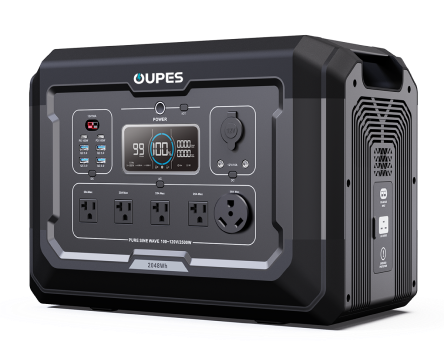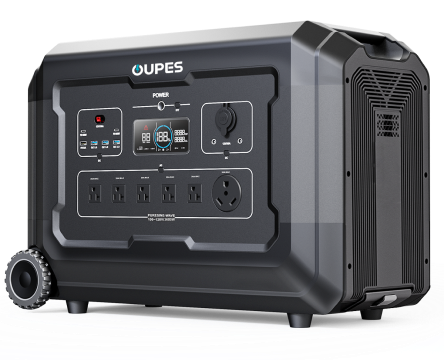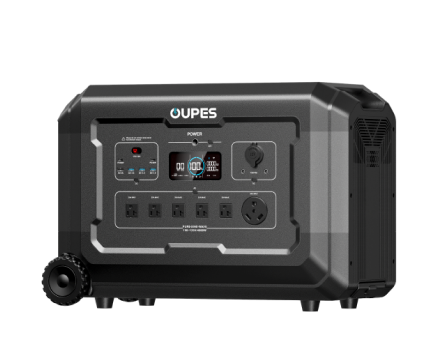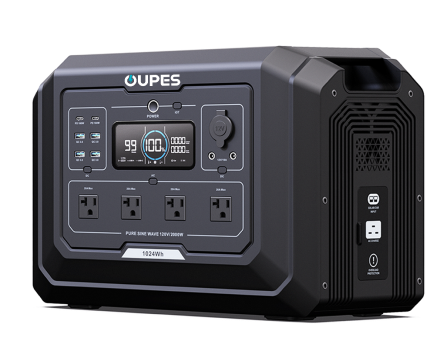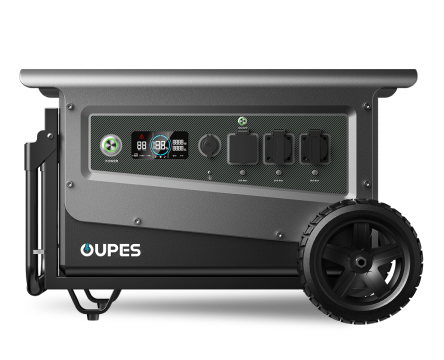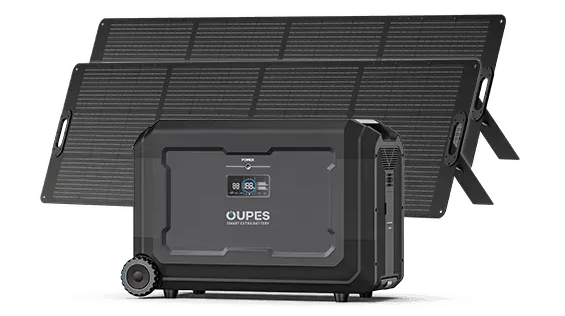
TL;DR / Key Takeaways
Urban and rural power outages differ in cause, duration, and infrastructure. Urban outages often stem from grid overloads or equipment faults and may last hours, while rural outages are typically due to weather or downed lines and may last days. :contentReference[oaicite:0]{index=0} For urban settings, compact, fast-acting backup systems (like a mobile solar generator or portable power station) are ideal. For rural areas, larger capacity systems with solar charging and independence are better. This article guides you through scenario-specific preparations, using your brand’s portable power stations from OUPES as one example solution, and includes comparison tables and user-oriented steps to help select and deploy the right equipment.
Introduction: Why Urban vs. Rural Outage Needs Differ
When a power outage strikes, whether you live in a city apartment, suburban home, or a countryside farm matters greatly. The causes, restore times, and available support differ. In cities the electrical grid is dense, but highly loaded and reliant on complex infrastructure. In rural areas, long overhead lines and fewer substations mean longer restore times and larger exposure to weather or wildlife. :contentReference[oaicite:2]{index=2} Because of that difference, backup power strategies should be tailored: what works great in an urban condo may be insufficient for a rural cabin, and vice versa.
Understanding Urban Outage Scenarios
In an urban environment you might face shorter but more frequent outages. These could be due to transformer faults, heavy demand peaks, or grid switching. Characteristics:
- Many neighbouring homes affected at once.
- Typically restored within hours, often under 24 hours.
- Space may be limited (apartments, multi-unit housing).
- Access to grid-connected support and services is better.
Therefore the optimal solution is rapid backup — for example keeping your lights, small fridge, communication devices, and ventilation running until power returns.
Urban Solution Focus: Compact & Quick
For this situation you want a portable power station that is:
- Capable of powering essential devices immediately.
- Easily stored in limited space (closet, wardrobe, under desk).
- Quiet and safe for indoor use (no loud generator, no fumes).
A unit from OUPES offering, say, 2 kW output and 2 kWh battery capacity might serve well for such a scenario.
Understanding Rural Outage Scenarios
In rural locations the outage patterns differ:
- Lines are longer and often exposed to storms, wildlife, falling trees.
- Restoration may take longer — several hours to days. :contentReference[oaicite:3]{index=3}
- Grid support may be limited; you might need to be self-sufficient.
- More space may be available for larger systems, solar panels, and outdoor storage.
In these cases your backup power solution must cover longer durations and more loads (refrigerator, heating or cooling, lights, communication). You may also integrate renewable charging (solar) to sustain over days.
Rural Solution Focus: Endurance & Self-Sufficiency
Here you want:
- A high-capacity portable power station (5-10 kWh or more) or a modular battery system.
- Solar input capability to recharge during daylight and extend uptime.
- Robust inverter output for heavy appliances.
- Consideration for weather-proofing and remote monitoring.
An OUPES station with 5 kW peak output and multiple kWh capacity plus solar panel inputs is a good match.
Comparative Table: Urban vs Rural Backup Power Needs
| Factor | Urban Scenario | Rural Scenario |
|---|---|---|
| Typical Outage Duration | Less than 24 h | 24 h to several days |
| Space Available | Limited (indoor or small balcony) | More space (garage, barn, yard) |
| Essential Loads | Fridge, lights, communication, fan/heater | Fridge, lights, water pump, heating/cooling, internet) |
| Preferred Battery Size | 2-3 kWh | 5-10 kWh+ |
| Solar Input Importance | Optional | Highly recommended |
| Noise & Emissions Sensitivity | High (indoors, neighbours) | Moderate (outdoor or separated area) |
Choosing the Right Solution With OUPES Portable Power Stations
When evaluating OUPES or similar systems, consider:
- Continuous output power (kW) – can the inverter support your devices?
- Battery capacity (kWh) – how long will the system run your loads?
- Surge capacity – can it handle startup of appliances like pumps or freezers?
- Solar recharging – especially in rural use, can you plug in solar panels?
- Portability, safety, installation constraints – indoor vs outdoor deployment.
Selecting specifications aligned with your outage scenario ensures you’re not under-prepared or over-spending.
Urban Application: Step-by-Step Guide
1. List your essential devices (e.g., fridge 150 W, lights 100 W, router 20 W, fan 60 W). 2. Estimate simultaneous load ~330 W, and plan headroom (choose 500 W output at least). 3. Estimate duration: if typical outage is 6 hours, you need 0.33 kW × 6h = ~2 kWh. Add buffer → choose ~3 kWh capacity. 4. Choose OUPES unit: 1 kW continuous output, 3 kWh battery, indoor rated. 5. Ensure you store it indoors, keep ventilation, and recharge after use. 6. During outage: use high-efficiency LED lights, close doors/windows to reduce heating/cooling load, use portable power station for essentials only.
Rural Application: Step-by-Step Guide
1. Expand your load list: fridge 150 W, lights 100 W, water pump 300 W, internet router 20 W, heater 600 W (if applicable). Simultaneous ~1,170 W. 2. For 24 h outage: 1.17 kW × 24h ~28 kWh usage. But you may cycle loads (not all at once) so perhaps you need ~10–12 kWh capacity. 3. Choose OUPES station rated 1.5 kW continuous, surge 3 kW, battery ~10 kWh. 4. Add solar panels (e.g., 1,000 W input) so you can recharge during day and sustain multi-day outages. 5. Store outdoor/garage unit with weather protection, ensure safe connections, monitor battery state. 6. During outage: prioritize loads, run water pump and heater in daytime when solar is available, cycle motors, avoid running everything at once.
Installation & Safety Considerations
Regardless of urban or rural use, these safety and operational tips apply:
- Ensure proper ventilation and avoid placing battery stacks in enclosed unventilated rooms.
- Keep the system dry and protected from rain, flood or extreme heat. Rural deployment often deals with these risks.
- Use pure sine wave inverter outputs so all devices run cleanly.
- Label your circuits and know what loads you are powering to avoid overload.
- If integrating with solar panels, ensure panel mounting is secure and wiring is safe from animals or weather.
FAQ
Q1: How many hours can a portable power station keep me powered during an outage?
It depends on the station’s capacity (kWh) and your load (kW). Example: a 3 kWh station powering 0.5 kW load lasts ~6 hours (3 ÷ 0.5). In rural multi-day outages you’ll need larger capacity or solar input to sustain longer periods.
Q2: Is solar input essential for rural power outages?
Yes. Because rural outages often last longer, solar charging reduces dependence on grid or fuel. Many experts recommend hybrid solar-battery systems for resilience. :contentReference[oaicite:4]{index=4}
Q3: Can the same solution work for both urban and rural needs?
Partially yes. But you’ll likely overpay for urban-only use if you buy large rural-capacity system. Matching system size to your scenario gives best value.
Q4: Are noisy gasoline generators still viable?
They may work, but they have downsides: noise, fuel logistics, emissions, maintenance. A portable battery/solar system (like from OUPES) offers cleaner, quieter, and often safer backup.
Q5: How often should I maintain a backup power station for outages?
For readiness: check monthly or quarterly, ensure battery is at 40-60% if unused, recharge to full before expected season (storm season), test the system. In rural settings, inspect solar panels and wiring annually.
Conclusion
Power outages are not one-size-fits-all. Urban and rural areas present very different conditions and demands, and your backup strategy should reflect that. For urban residents, compact and fast-acting portable power stations may suffice. For rural settings, long-endurance systems with solar input and robust capacity are key. Using your OUPES portable power station line or similar systems, you can build the right resilience: compute your loads, match capacity, include solar if needed, and set up safely. With proper preparation, you’ll be ready for either short urban flickers or longer rural blackouts—keeping lights, communication and essential appliances running when the grid goes down.

